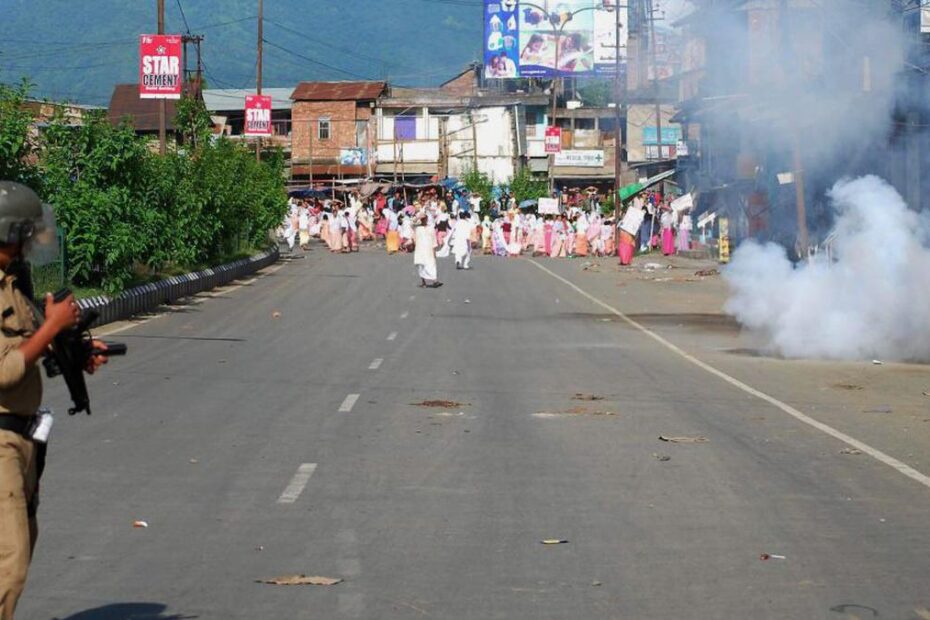Manipur is the 25th largest state in India, located on the northern part of India. The capital of Manipur is Imphal. It is located in the Imphal Valley, the most populous and prosperous region of Manipur. As per the census of 2011 Manipur is home to more than 28 lakh people and this number is expected to rise to 32 lakh in 2023. The state is home to a diverse population of over 30 ethnic groups, each with its own language, culture, and traditions. The two largest groups are the Meitei, who make up about 53% of the population, and the Kukis, who make up about 16% of the population.
GEOGRAPHY OF MANIPUR
Manipur is a hilly state, with the Naga Hills to the north, the East Manipur Hills along the eastern Myanmar border, the Mizo and Chin hills to the south, and the West Manipur Hills to the west. The Manipur River valley lies in the center of the state. The forest cover in Manipur is 77.69% of the state’s geographical area and cultivable area in Manipur is estimated to be around 7.41% of the state’s total geographical area. Of this total cultivated area, 52% is confined to the Imphal Valley, the most populous and prosperous region of Manipur. Though Imphal valley forms 10% of the total geographical area of Manipur but it is home to 60% of the total population of state.
TIMELINE OF THE CRISIS
The Meitei tribe that makes up 53% of the population of Manipur is not granted ST status by the Government of India. Most of the Meitei population lives in the Imphal valley and are involved in agricultural activities. The ST status granted to other tribes protects their rights on the land and also provides them access to special government programs and benefits, such as reserved seats in education and employment, Meitei’s also wanted such a protection as outsiders are also allowed to settle in and around Imphal valley with is already overpopulated.
- April 28: The Manipur High Court directed the state government to recommend Scheduled Tribe (ST) status to the Meitei community within two months.
- April 30: The All Tribal Students’ Union of Manipur (ATSUM) called for a 12-hour total shutdown in protest against the High Court order.
- May 3: Violence erupted between Meitei and tribal communities in Imphal. Several houses and vehicles were burned, and several people were injured.
- May 4: The Manipur government deployed the Indian Army and paramilitary forces to control the violence. Curfew was imposed in several areas of Imphal.
- May 5: The violence spread to other parts of Manipur, including Churachandpur, Ukhrul, and Tamenglong. Several more people were killed and injured.
- May 6: The Manipur government imposed a shoot-at-sight order in Imphal. The violence continued, and several more people were killed and injured.
- May 7: The violence subsided, and the Manipur government lifted the shoot-at-sight order. However, curfew remained in place in several areas of Imphal.
ARGUMENT BY KUKIS
Historical tensions: The Meitei and Kuki tribes have a long history of conflict. The Kukis believe that the Meiteis have historically oppressed and marginalized them. They argue that granting ST status to the Meiteis would further marginalize the Kukis and other tribal communities in Manipur.
Economic and social disparities: The Meiteis are the dominant majority group in Manipur, while the Kukis are a minority group. The Kukis argue that the Meiteis already enjoy a number of economic and social advantages over the Kukis, and that granting them ST status would further widen the gap between the two groups.
Concerns about land rights: The Kukis are concerned that granting ST status to the Meiteis would give them special rights over land. The Kukis argue that this could lead to the displacement of Kukis and other tribal communities from their traditional lands.
